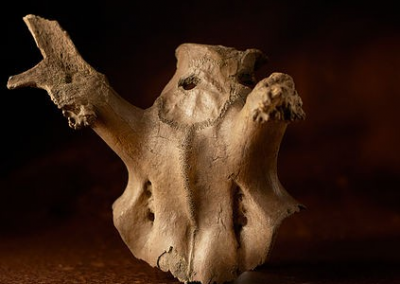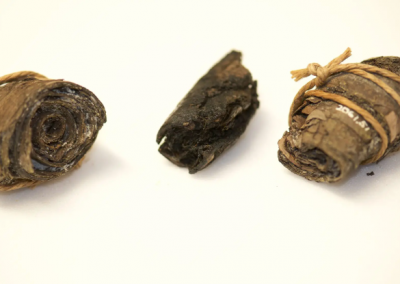Exploring Stone Age hammer heads
Despite being thousands of years old, Stone Age tools can often be found in museum collections around the country. Such items were highly practical and would have been commonly used as our early ancestors turned to farming.
Neolithic hammer head
Malton Museum, North Yorkshire
This hammer head from Malton Museum dates from the Neolithic period, the final part of the Stone Age, and could up to 6,000 years old. The Neolithic period was a time of transformation, when people first starting turning to farming as a way of life and for sustenance.
Early humans would have used a stone or rock to hammer other objects (or other stones), but the addition of a handle marked the evolution of the hammer. It was the first step towards the hammer we know today. You can see that the hammer head has a neat hole through it which is where the ‘shaft’ or handle would have passed through. Less durable than the stone, the wood has decomposed. However, the handle was a significant development, allowing much greater control and accuracy, as well as leverage.
Today, you can get lots of different shapes of hammers, for different uses. What shape hammer do you think would be most useful if you could only have one?
Have you ever used a tool to complete a task? What kind of tool?
Why do you think hammer heads needed to be a hard material?
Adding a handle to a hammer was an important step for Stone Age people – how does a handle help the user to be more accurate or precise? How does it help them to apply more force?
Imagine trying to use this hammer compared to a modern-day hammer. What differences are there? Do you think you’d find it easier or harder? Why?
Can you think of other kinds of tools that may have been used to help farm the land?
Vocabulary
Neolithic: this term refers the final period of the Stone Age, known as the New Stone Age and dates from roughly 4,000 to 2,000 BCE. It was a time when farming and agriculture were becoming established and communities were starting to settle in one place.


Hands on History
You can borrow these objects as part of a loan box at Malton Museum.
Schools can take part in a ‘Stone Age to Iron Age‘ workshop to explore prehistoric tools at Craven Museum in Skipton and a ‘Stone Age Scarborough’ workshop from Scarborough Museums and Galleries.
There are more loan boxes to borrow across North Yorkshire, including from Craven Museum in Skipton and the Dales Countryside Museum in Hawes.
Museum Location
Explore more Stone Age objects





